
Night Exercise is a 1942 detective novel by John Rhode, the pen name of the British writer Cecil Street. It is a stand-alone wartime novel from Rhode, best known for his long-running series featuring Lancelot Priestley. It was published in America by Dodd Mead under the alternative title Dead of the Night.

The Claverton Mystery is a 1933 detective novel by John Rhode, the pen name of the British writer Cecil Street. It is the fifteenth in his long-running series of novels featuring Lancelot Priestley, a Golden Age armchair detective. It was published in the United States by Dodd Mead with the altered title The Claverton Affair. The tone of the book has been described as much darker than the author's other novels.

Common Sense Is All You Need is a 1947 detective novel by the British author Alfred Walter Stewart, published under his pseudonym J.J. Connington. It was his last novel, published by Hodder and Stoughton the year of his death, and featured his regular character Sir Clinton Driffield. It was the seventeenth in a series of novels featuring Driffield, a Chief Constable of a rural English county, published during the Golden Age of Detective Fiction. Although published during the postwar era. it is set during the Second World War with German bombing raids taking place.

For Murder Will Speak is a 1938 detective novel by the British author Alfred Walter Stewart, published under his pseudonym J.J. Connington. It is the thirteenth in a series of novels featuring the Golden Age Detective Chief Constable Sir Clinton Driffield. The title references a line from Shakespeare's Hamlet. It was released in the United States by Little, Brown and Company under the alternative title Murder Will Speak.

Mystery at Lynden Sands is a 1928 detective novel by the British author Alfred Walter Stewart, published under his pseudonym J.J. Connington. It is the third in a series of novels featuring the Golden Age Detective Chief Constable Sir Clinton Driffield. It was published in London by Gollancz and Boston by Little, Brown and Company. It received a generally positive critical reception, with one reviewer going so far as to say it "may just fail of being the best detective story of the century" comparing it to The Cask and The Mysterious Affair at Styles. In A Catalogue of Crime by Jacques Barzun and Wendell Hertig Taylor describe it as "early but not first-class Connington".

Tragedy at Ravensthorpe is an 1927 detective novel by the British writer Alfred Walter Stewart, published under his pseudonym J.J. Connington. It is the second in a series of seventeen novels featuring the Golden Age Detective Chief Constable Sir Clinton Driffield following on from Murder in the Maze. The American edition was published in Boston by Little, Brown and Company.
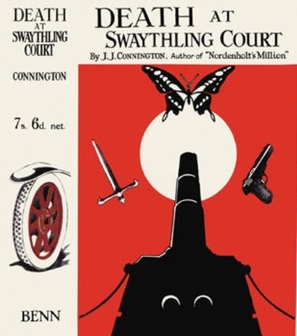
Death at Swaythling Court is a 1926 mystery detective novel by the British writer Alfred Walter Stewart, published under his pseudonym J.J. Connington. It was Stewart's first attempt at a detective novel, having previously produced works including the 1923 science fiction novel Nordenholt's Million. It is a stand-alone novel, revolving around a country house mystery. The following year the author published Murder in the Maze, the first of seventeen novels featuring the Golden Age detective Sir Clinton Driffield, for which he is best-known.

The Boathouse Riddle is a 1931 detective novel by the British author Alfred Walter Stewart, published under his pseudonym J.J. Connington. It is the sixth in his series of seventeen novels featuring the Golden Age Detective Chief Constable Sir Clinton Driffield. The title is also written as The Boat-House Riddle.

The Two Tickets Puzzle is a 1930 detective novel by the British author Alfred Walter Stewart, published under his pseudonym J.J. Connington. It was the second and last book featuring Superintendent Ross, an attempt to replace the author's better-known series character Sir Clinton Driffield who returned in Connington's next novel The Boathouse Riddle. With its story of a police detective trying to break down an alibi using railway timetables, it resembled the style of Freeman Wills Crofts' Inspector French series. Dorothy L. Sayers used a similar plot for her 1931 novel Five Red Herrings, and references Connington's novel in the dialogue.
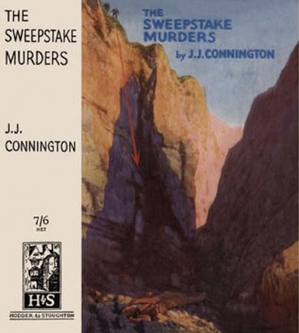
The Sweepstake Murders is an 1931 detective novel by the British author Alfred Walter Stewart, published under his pseudonym J.J. Connington. It is the seventh in his series of novels featuring the Golden Age Detective Chief Constable Sir Clinton Driffield. It uses a tontine murder theme, which recurs in detective and mystery stories.
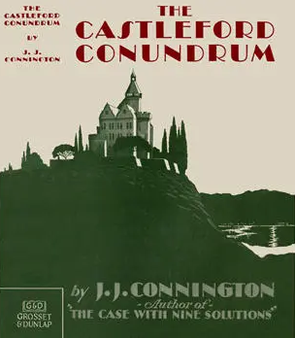
The Castleford Conundrum is a 1932 detective novel by the British author Alfred Walter Stewart, published under his pseudonym J.J. Connington. It is the eighth in his series of novels featuring the Golden Age Detective Chief Constable Sir Clinton Driffield, the Chief Constable of a rural English county.
Sir Clinton Driffield is a fictional police detective created by the British author J.J. Connington. He was one of numerous detectives created during the Golden Age of Detective Fiction, making his first appearance in Murder in the Maze in 1927. He appeared in four subsequent novels by 1929 when Connington apparently wished to write him out following Nemesis at Raynham Parva. However, his replacement Superintendent Ross failed to gain the same level of popularity over two novels and Sir Clinton returned in the 1931 mystery The Boathouse Riddle. He went on to appear in a further eleven novels. The last entry Common Sense Is All You Need was published the year of Connington's death in 1947 and is set in wartime Britain.

Nemesis at Raynham Parva is a 1929 detective novel by the British author Alfred Walter Stewart, published under his pseudonym J.J. Connington. It is the fifth in his series of seventeen novels featuring the Golden Age Detective Sir Clinton Driffield. It was published in the United States by Little, Brown and Company under the alternative title Grim Vengeance.

A Minor Operation is a 1937 British detective novel by the British author Alfred Walter Stewart, published under his pseudonym J.J. Connington. It is the eleventh in a series of novels featuring the Golden Age Detective Chief Constable Sir Clinton Driffield and was published by Hodder and Stoughton in London and Little, Brown and Company in the United States. In a New York Times review Isaac Anderson noted Sir Clinton as being rare amongst Chief Constables in British mystery stories for his competence noting "If you have not previously met him in Mr. Connington’s other novels, this is a good time to make his acquaintance, for in this book you will see him at his best".
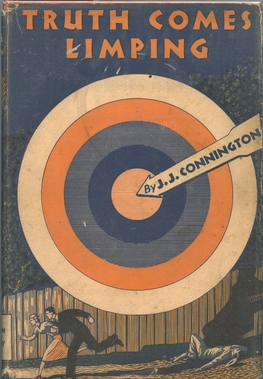
Truth Comes Limping is a 1938 mystery detective novel by the British author Alfred Walter Stewart, published under his pseudonym J.J. Connington. It is the twelfth in a series of seventeen novels featuring the Golden Age Detective Sir Clinton Driffield, the Chief Constable of a rural English county. It was published by Hodder and Stoughton in London and Little, Brown and Company in the United States.
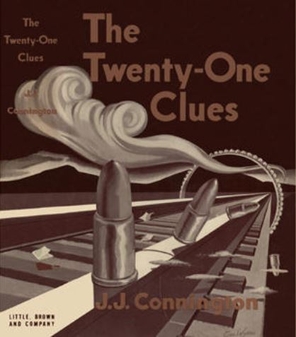
The Twenty-One Clues is a 1941 detective novel by the British author Alfred Walter Stewart, published under his pseudonym J.J. Connington. It is the fourteenth in a series of seventeen novels featuring the Golden Age Detective Sir Clinton Driffield, the Chief Constable of a rural English county. It was published by Hodder and Stoughton in London and Little, Brown and Company in the United States.

Murder in the Maze is a 1927 detective novel by the British author Alfred Walter Stewart, published under his pseudonym J.J. Connington. It was the first of seventeen novels featuring his best-known character the Golden Age Detective Sir Clinton Driffield, Chief Constable of an English county. It takes the form of a classic country house mystery. First published in Britain by Ernest Benn, it was released in the United States by Little, Brown and Company.

The Eye in the Museum is a 1929 detective novel by the British author Alfred Walter Stewart, published under his pseudonym J.J. Connington. It was the first of two books featuring Superintendent Ross, a brief attempt by the author to replace his best-known character Chief Constable Sir Clinton Driffield. Ross is similar in type to the contemporary Inspector French created by Freeman Wills Crofts. The title is a play on words referring both to a glass eye that is a prominent part of the museum's collection and a camera obscura on the top of the building which provides a vital evidence allowing Ross to solve the case.

The Ha-Ha Case is a 1934 detective novel by the British author Alfred Walter Stewart, published under his pseudonym J.J. Connington. It is the ninth in his series of novels featuring the Golden Age Detective Chief Constable Sir Clinton Driffield, the Chief Constable of a rural English county. A traditional country house mystery, the title refers to a Ha-ha a sunken fence hidden to the naked eye common on country estates. Unlike the other novels in the series which are set when they are written, this is dated a decade before its publication in 1924. In a review in the Sunday Times Dorothy L. Sayers wrote "There is no need to say that Mr. Connington has given us a sound and interesting plot, very carefully and ingeniously worked out."
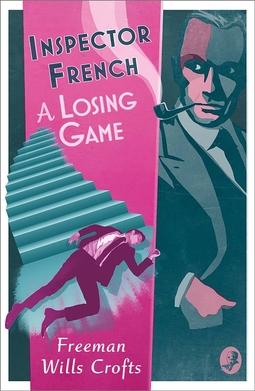
The Losing Game is a 1941 detective novel by the Anglo-Irish writer Freeman Wills Crofts. It is the twenty second in his series of novels featuring the Golden Age detective Inspector French of Scotland Yard. It was published in the United States by Dodd, Mead under the alternative title A Losing Game.



















